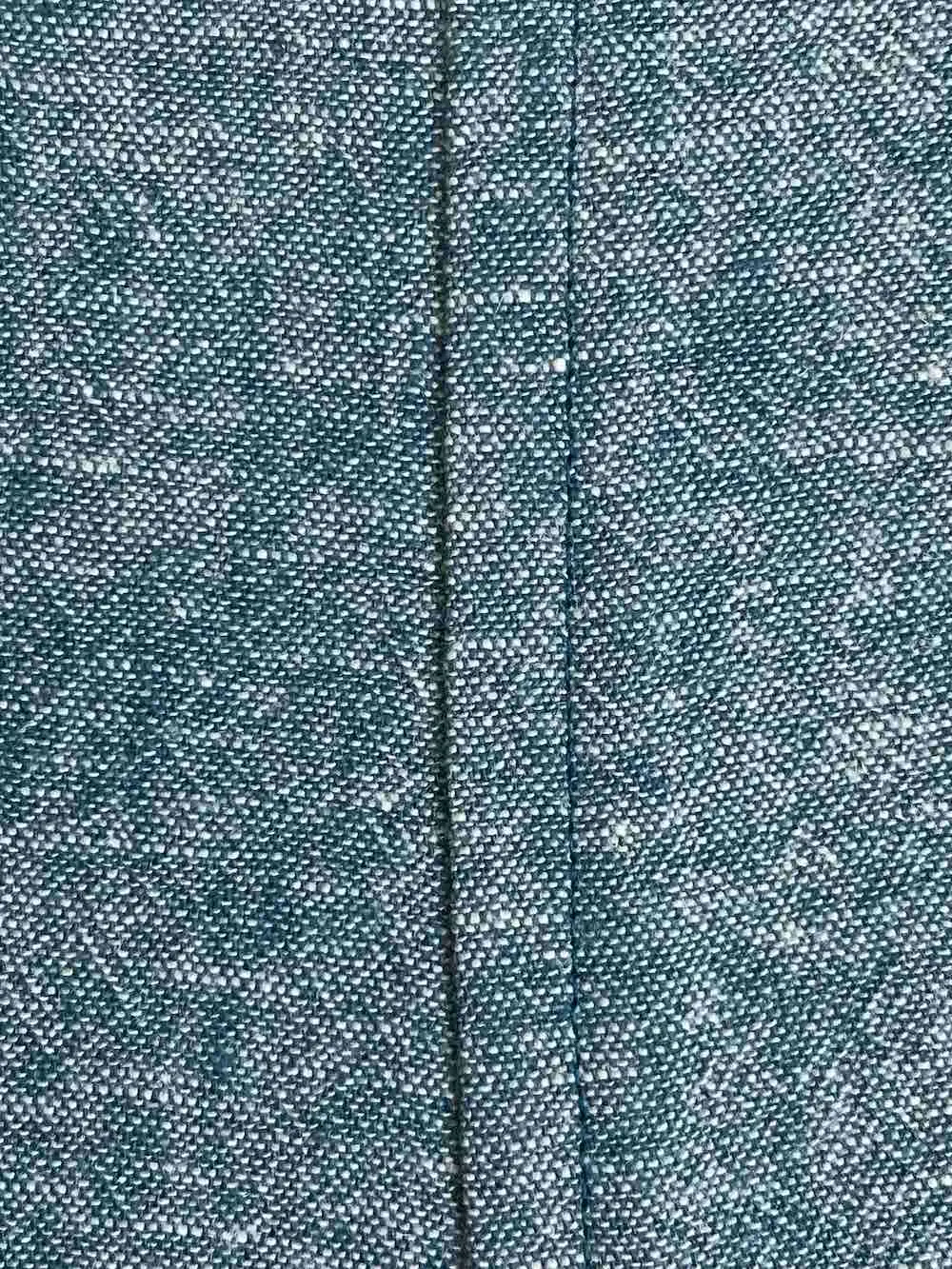A welt seam (also called a topstitched seam) is a durable, single-topstitch seam used on heavy fabrics such as wool coats.
The welt seam is similar to the mock flat felled seam but generally has just one row of topstitching. This is less bulky than the flat felled seam. It works well for thicker and heavier fabrics that do not fold well for the felled seam method when you want a stronger seam.
There are so many types of seams. It all depends on the type of fabric you are sewing and the finished look you want. A plain seam with a straight stitch is great for most sewing projects.
The welt seam has a stitching line that shows on the front side of the fabric. It is a topstitched seam.

How to Make a Welt Seam
Learn how to make a welt seam in this step-by-step tutorial with photos.
As an Amazon Associate I earn from qualifying purchases. Read more about our affiliate linking policy.
The welt stitch is perfect for thick or bulky fabrics, adding a second line of stitching to make the seam durable and sturdy - perfect for outerwear and other places you want a stronger seam.
This seam is very similar to the mock flat felled seam, but only has one stitching line on the outside of the garment versus two like a flat felled seam. The flat felled seam encloses all of the raw edges and seam allowances inside a fold of the fabric, making it the strongest seam option.
Materials
- Two pieces of fabric for a seam
- Thread, either coordinating with the fabric or contrasting for decorative purposes
Tools
- Sewing machine
- Serger - optional
- Iron
- Pressing surface
Instructions
- The welt seam is best for straight seams or very gentle curves. It is not suitable for sewing in sleeves or other highly curved seams.
Start by edge finishing both of the raw edges of the seam allowance you are going to finish with the welt seam.
I chose to use my serger to finish the edges, but you can zig-zag stitch or overcast the edges using your home sewing machine. You can also use pinking shears to reduce the firm line of the seam allowance. I don't recommend any edge finish that adds bulk to the seam allowance, like using a bias tape edge or Hong Kong finish.
- Next, sew the seam with right sides together, just like you would normally.

- I like to first press the seam open to secure the stitching and make sure it lies flat.

- Then, you'll want to press both seam allowances to one side. Pick which side you want to have the bulk and the top stitching line.

- To finish the seam, stitch from the right side of the fabric, catching both sides of the seam allowances underneath. I like to stitch about 3/8-inch from the original seam line. You can either use a coordinating thread or choose a contrasting thread for a decorative touch to your garment.

- Here is the finished welt seam from the right side of the garment showing the top-stitched seam.

Notes
TIP: Use a thicker thread for top stitching to add a decorative touch to the stitching line. Most thread manufacturers make a top stitch heavy thread.
Recommended Products
As an Amazon Associate and member of other affiliate programs, I earn from qualifying purchases.
Where is a welt seam used?
This seam works well for thick and/or bulky fabrics to provide more strength to the seam. It is generally used for straight seams. It reduces bulk in shoulder seams on a thick wool coat or side seams for a straight skirt or pants.
It’s also a good choice for fabrics that tend to ravel easily, like a loosely woven linen. By edge finishing the seam allowance and then securing it with a top stitch, the seam is sturdy and resists raveling.
How is this seam different than a flat felled or mock flat felled seam?
The welt seam has one row of topstitching and exposed seam allowances, similar to the mock flat felled seam. The mock flat felled seam has two rows of topstitching to make it look like the flat felled seam. The flat felled seam has no seam allowances exposed. The raw edges as they are all wrapped inside one of the seam allowances before topstitching.
There are many great seam finishes to try! Some are a French seam, flat-felled seam with a folded edge, and a Hong Kong finish.
Browse through more tips and techniques for making clothes on Create Whimsy.



